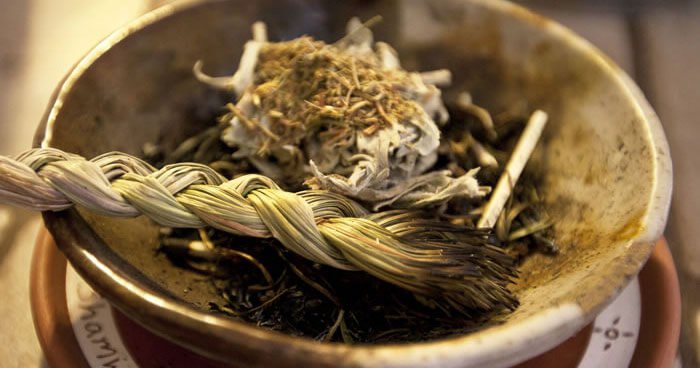The Science Behind Smudging : Here’s What Really Happens When We Burn Sage…
PURIFYING OURSELVES WITH SMOKE CAN LITERALLY ‘CLEAR THE AIR’
If you grew up religious, you probably witnessed the ritualistic use of smoke in ceremony. For me it was frankincense and myrrh being burned during Sunday mass. For others it might be smoldering incense at their Buddhist Temple, or the spiraling tendrils of bukhoor in a mosque.There is something primordial within us that connects smoke with spirituality.
In Native American tradition, it’s seen as a bridge to the higher realms, a way to bring in good spirits and dispel the negative or stagnant ones. The most common smoke-purification ritual used by the northern tribes is a technique called smudging.
This practice (or some variation of it) is embraced by almost every one of the native cultures we’ve worked with in the western hemisphere.

When we see a unique method used by different tribes across multiple continents or land masses, it’s a strong indication that it yields very real physical and/or spiritual benefits.Below, I want to show you how to try smudging yourself and also explore some of the wisdom behind this ancestral art.
A SHAMANIC CLEANSING RITUAL
Smudging is the ritualistic burning of herbs and plant resins in a shell or clay bowl while prayers of gratitude and well-being are said aloud. The smoke is traditionally fanned using the hand or a feather (eagle feathers are treasured for this) and directed over a person or throughout a living space. The purpose is to wash away impurities, sadness, anxieties, dark thoughts and any unwanted energies or emotions that may be clinging to a space or individual.
Also Read: 31 Long Forgotten Native American Medicinal Cure
This is often done before a ceremony or special gathering, after an argument (to literally “clear the air”), when moving into a new home, at the end of the cold season to re-invigorate one’s living space, and on a variety of other occasions.












1 Response
[…] the Treaty of Fort Laramie, the government tried to resolve the situation by asking the Southern Cheyenne to sign a new treaty that ceded all their lands to them except the small Sand Creek Reservation in […]